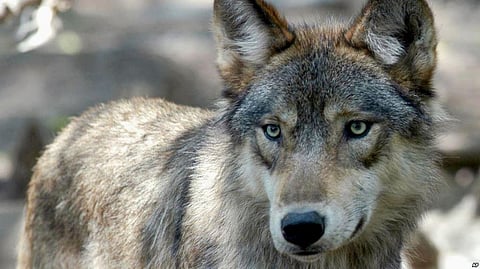FILE – In this Dec. 4, 2014, photo released by the Oregon Department of Fish and Wildlife, a wolf from the Snake River Pack passes by a remote camera in eastern Wallowa County, Ore. VOA
Threat to recovery seen
But she said their recovery would "come to a screeching halt" as hunting and trapping are allowed in more states. That would put the species in a tenuous position in the Pacific Northwest and likely rule out its return to historic ranges, such as Colorado's southern Rockies and the Adirondacks in the Northeast, she said.
U.S. Fish and Wildlife officials say their goal was to prevent extinction, not restore wolves everywhere they once roamed. State officials say even without federal protection, wolves won't return to their imperiled status of the early 20th century because modern hunting regulations focus on managing animals, not exterminating them.
"The only way wolves were removed from the Lower 48 was using techniques we don't use anymore — poisons," said Toby Boudreau, wildlife bureau chief for the Idaho Department of Fish and Game.
Endangered Species Act protections were given to the animals in the 1970s except in Alaska, where the population was never considered in danger. States that designate the wolf as threatened or endangered under their own laws and regulations include California, Colorado, Illinois, Nebraska, New Hampshire, New York, Texas, Virginia and Washington.
David Mech, a U.S. Geological Survey wolf expert, said the species likely would continue to grow and expand in the contiguous U.S. after losing its endangered and protected status, albeit more slowly.
Wolves can and will live any place people tolerate them, Mech said. He pointed to studies that suggest the southern Rockies could host up to 1,000 wolves, with vast areas of additional habitat in the heartland region from Texas to North Dakota.
The Interior Department will make a final decision on its proposal after a public comment period that runs through May 14.
The most immediate changes could come for more than 4,000 wolves in the Western Great Lakes. Wisconsin law requires its wolf hunts to resume if the state regains authority. Wildlife officials would make the call in Michigan and Minnesota.
Hunting, trapping or both were allowed in the region at various times between 2012 and 2014 before a federal judge shut them down by returning wolves to the endangered species list. State survey data for the Western Great Lakes showed at least modest wolf declines during the period.


